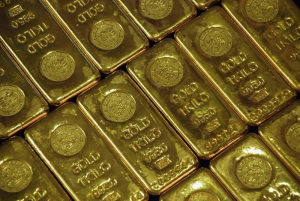The rally in U.S. markets will be tested this week when earnings from chipmaking giant Nvidia (NASDAQ:NVDA) are released. U.S. inflation data will likely underline expectations for long awaited rate cuts, while the Eurozone and Australia are also to release inflation data that will inform the trajectory of interest rates. Here's your look at what's happening in markets for the week ahead.
Nvidia results Investor enthusiasm for artificial intelligence could be tested when Nvidia reports earnings after the close on Wednesday.
The earnings report along with guidance on whether it expects corporate investments in AI to continue, could be a key inflection point for market sentiment heading into what is historically a volatile time of the year.
Nvidia stock is up some 150% year-to-date, accounting for around a quarter of the S&P 500’s 17% year-to-date gain. But the stunning, multi-year run and AI-mania have also drawn comparisons to the dot-com craze that imploded more than two decades ago.
The results come at the end of an earnings season during which investors have taken a less forgiving view of big tech companies whose earnings failed to justify rich valuations or prodigious spending on AI. Examples include Microsoft (NASDAQ:MSFT), Tesla (NASDAQ:TSLA) and Alphabet (NASDAQ:GOOGL), whose shares are all down since their July reports.
U.S. data The highlight of the economic calendar will be Friday's Personal Consumption Expenditures (PCE) price index, the Federal Reserve’s preferred inflation yardstick.
Speaking at the Fed’s annual Jackson Hole symposium on Friday, Fed Chair Jerome Powell acknowledged recent progress on inflation and said that “the time has come for policy to adjust.”
"We do not see or welcome further weakening in labor market conditions," Powell added in a speech that appeared to all but guarantee a rate cut at next month's policy meeting, which would be the first such cut in over four years.
The economic calendar also includes a report on durable goods orders on Monday and revised second-quarter GDP figures on Thursday along with the weekly report on initial jobless claims.
Eurozone inflation Eurozone inflation data for August, due for release on Friday, will be pivotal in shaping the European Central Bank’s decision on interest rates for September.
This report, which follows national releases beginning on Thursday, comes after a small but unexpected uptick in inflation in July, signalling challenges in bringing inflation under control.
While headline inflation is expected to ease, partly due to falling oil prices, attention will remain on core inflation and the services sector, where price increases have proven more persistent.
Any upside surprises in the data could prompt caution, especially as traders have increased their expectations for an ECB rate cut in recent weeks.
Market expectations are heavily tilted towards a 25-basis point rate cut on September 12, with a high probability of additional cuts by the end of the year.
Australia inflation Wednesday's July inflation numbers could show headline inflation pulling back into the Reserve Bank of Australia’s 2-3% target band for the first time in three years.
Any indication that inflationary pressures are easing could intensify scrutiny on the central bank, seen as a global outlier for its reluctance to cut rates while many other central banks have embarked on, or are contemplating, easing cycles.
Investors are also looking to Wednesday’s data to potentially offer some relief to consumer sentiment, which has been weighed down by high borrowing costs.
Elsewhere, Tokyo’s August inflation report, due for release on Friday, may provide further clues into Japan's monetary policy outlook.
Gold Gold has reached consecutive record highs since 2022 and has surged over 20% so far this year, with $3,000 an ounce now within sight.
The precious metal, traditionally viewed as a safe haven during periods of heightened security risks and political and economic instability, has benefitted from several converging factors.
Russia’s invasion of Ukraine in February 2022 triggered an initial rally in gold prices. Rising commodity prices and subsequent inflation, which erodes the value of fiat currencies, further supported the uptrend.
Ongoing tensions in the Middle East and uncertainty surrounding the upcoming U.S. Presidential election have also contributed to gold’s gains. Additionally, expectations of U.S. interest rate cuts are pressuring the dollar, making gold more attractive as it typically has an inverse relationship with the U.S. currency.
However, gold investors should be cautious, as markets often experience corrections with the adage "nothing goes up in a straight line," reflecting the tendency to "buy the rumour, sell the fact."













